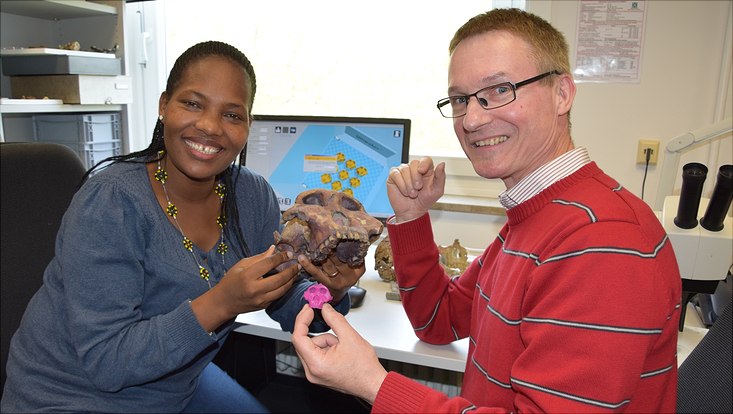Department of Mammalogy / Paleoanthropology
This department boasts one of Germany’s most significant research collections of mammals, including numerous collections of furs, organs, and embryos. The masticatory apparatus (i.e., chewing mechanism) forms a special focus of research, as the form and function of chewing surfaces in most mammals are closely linked to their evolution and modes of life. Furthermore, teeth remains are the most common mammalian fossils. This CeNaK department has developed new techniques for creating three-dimensional models of food traces on teeth, allowing researchers to reconstruct food, environmental conditions, and climate. These methods are unique to mammal research in Germany. When applied to modern-day and extinct mammals in the collection, including humans and their ancestors, these methods enable researchers to tap into a largely unexploited archive of the history of life. This has made it also possible to identify environmental factors causing evolutionary change.






